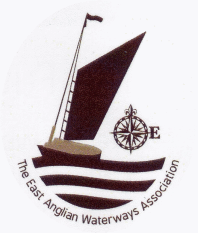
The East Anglian Waterways Association
Promoting access to the navigations of East Anglia for all
| Email EAWA |
 | The East Anglian Waterways Association Promoting access to the navigations of East Anglia for all |
|
| Home | About Us | Latest News | East Anglian Waterways | The Easterling | Join Us | Directors | NW & Dilham | Work Party | Links | Forum |
The North Walsham & Dilham Canal | ||
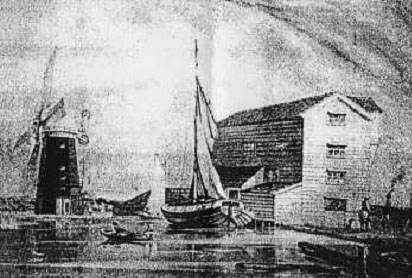 |
Prior to the canal being built, the River Ant was navigable up to
the tail of Dilham water mill, which was situated at the southern end of Dilham
Broad (also known as Dilham Lake) and not far from the present day Honing
(Dilham) Lock. The River Ant was an ancient navigation, but northward from Wayford it took a somewhat roundabout course, including a big meander to the east of the present canal. This section was also probably fairly narrow and shallow, but its course can still be traced on the map today. In 1810, the promoters decided instead of starting from the Navigatin at Dilham Mill, to bypass the loop, with a new cut running several hundred yards north of Wayford Brige, and improve theremainder of the route up to Honing Lock, which needed to bypass Dilham Water mill: | |
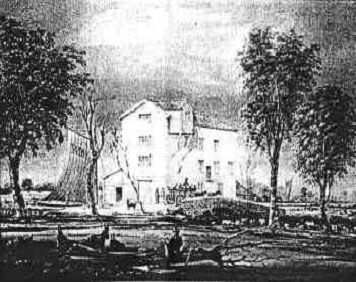 |
The 1812 Act contains a special provision preventing the original canal company from charging any tolls or dues "For any Boat, Barge , or Vessel which shall be navigated or pass upon any part of the river Ant which at the Time of passing this Act is navigable to Dilham:" | |
|
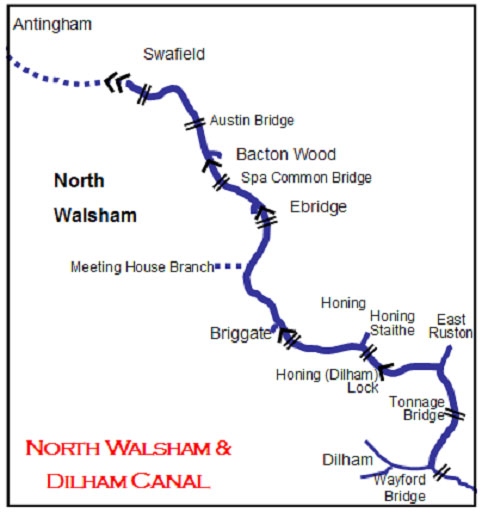 |
|
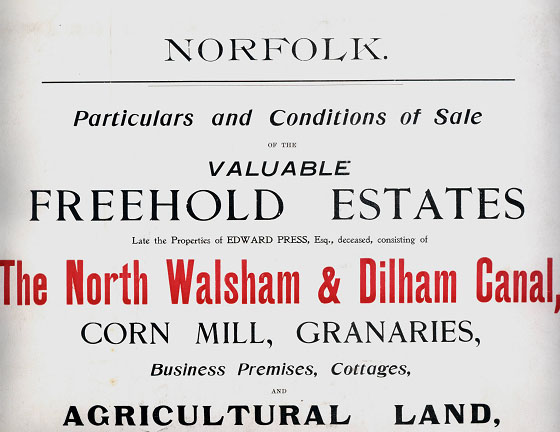 |
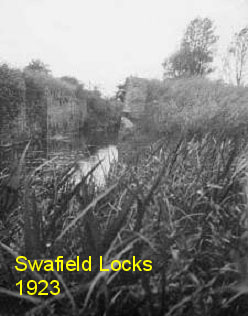 |
 |
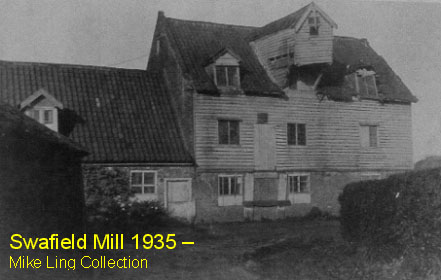
| |
 |
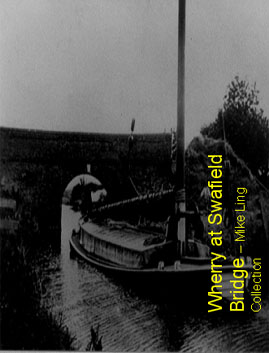 |
 |
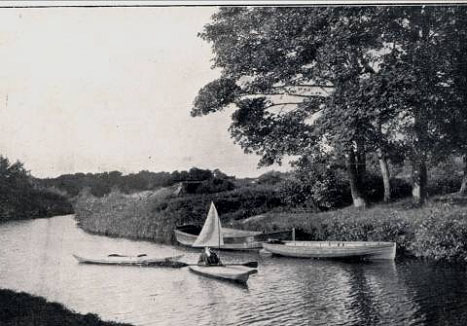 |
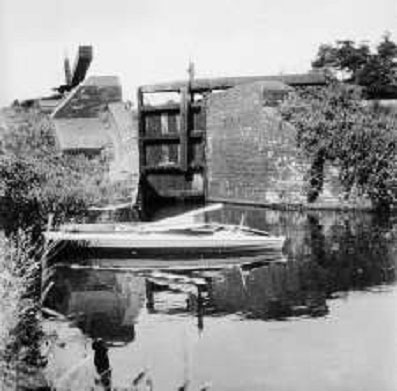 |

|
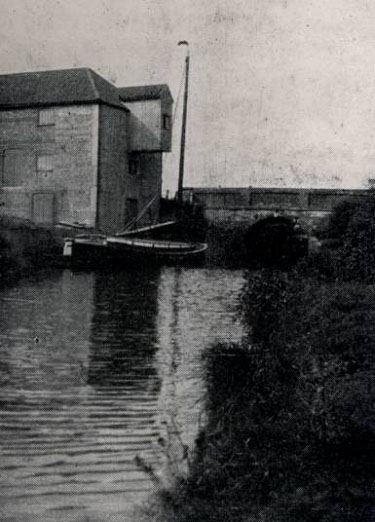 |

|
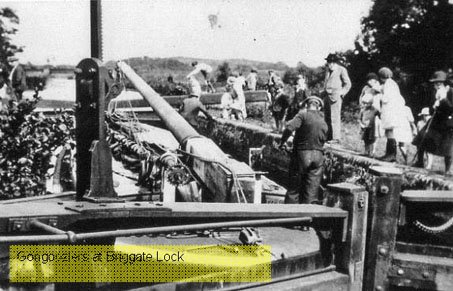 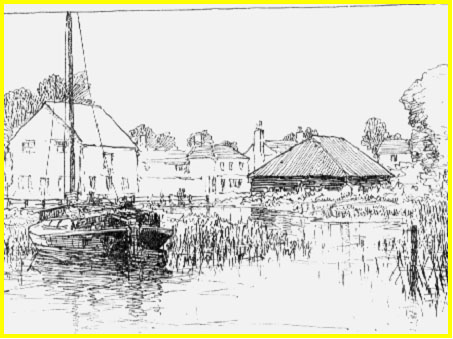 |
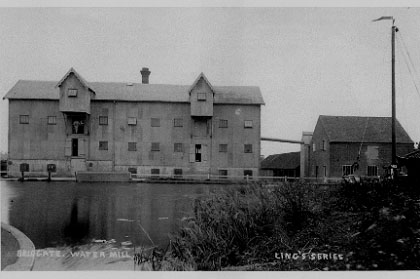 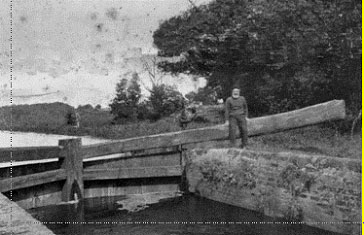  |
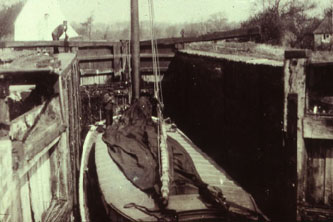 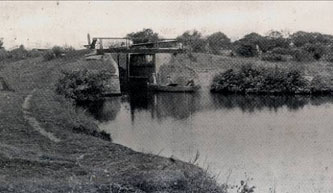 |
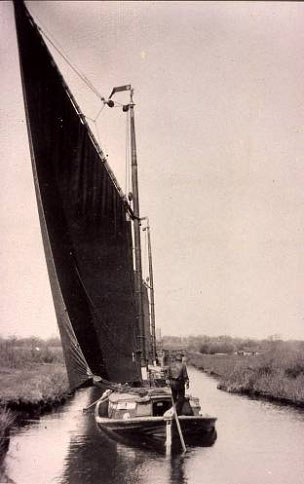 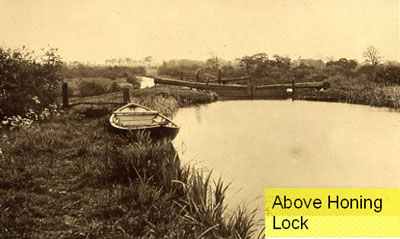  |
|
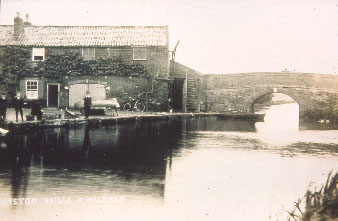 
|
Railways
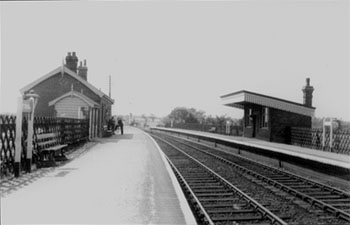 |
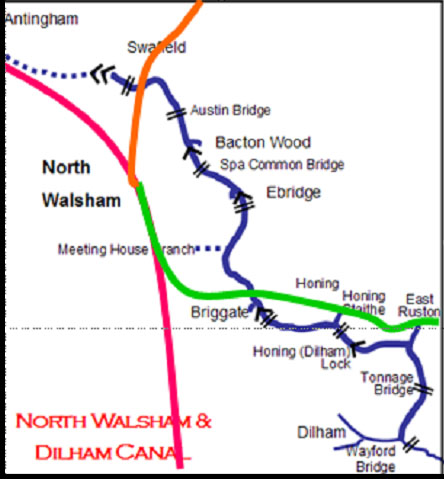 |
188616th March the Canal was sold to Edward Press for £600. The committee entrusted James Turner with the distributing the sale proceeds to the known holders of 446 shares out of the original 586. But he absconded with the money after paying out only 55 shares. |
 |
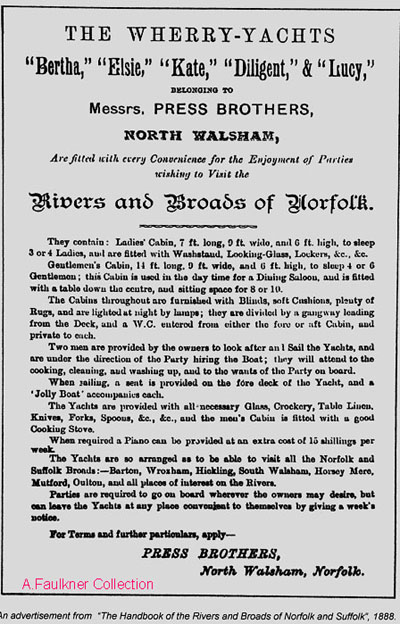 > > |
Pleasure Boating
|
Pleasure Boating was always a feature on the canal - and was emphasised in the 1907 Sales Particulars. |
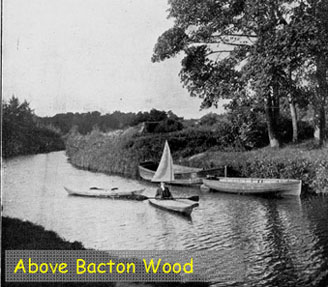 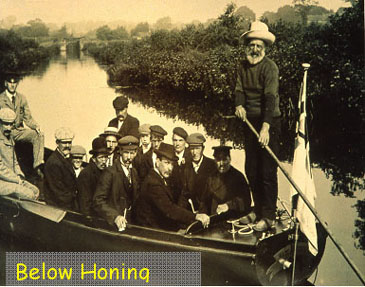 |
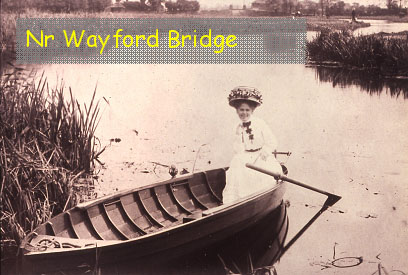 |
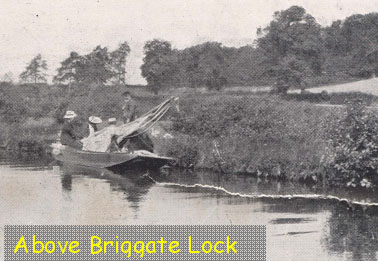 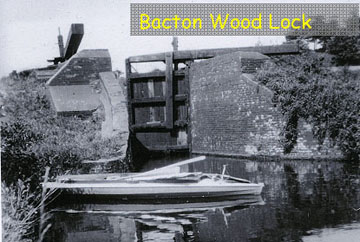 |
Sewage
|
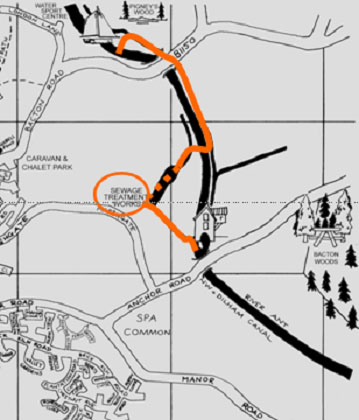 |
Dredging
|
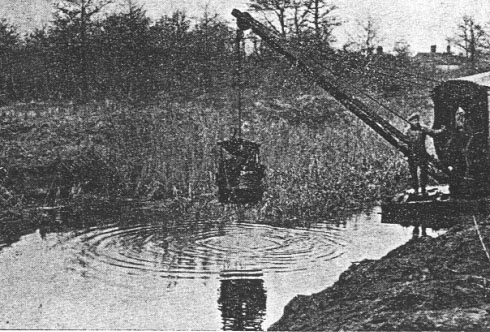 |
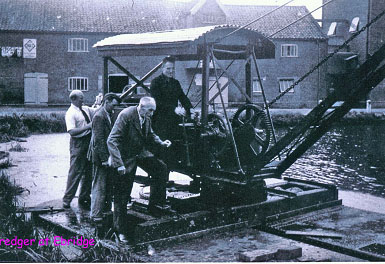 |
December 31st, 1956. What can be achieved if the will is present. These two photos were taken near Bacton Wood, on the North Walsham Canal. Photo by Arthur Walker: |
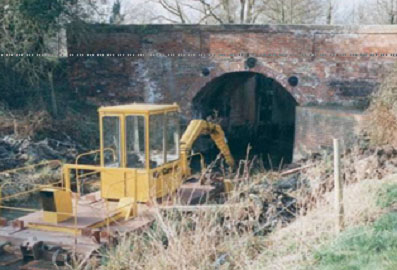
| |
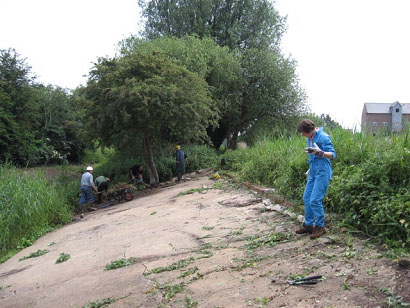
|
1940's
|
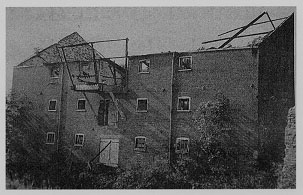
1912
|
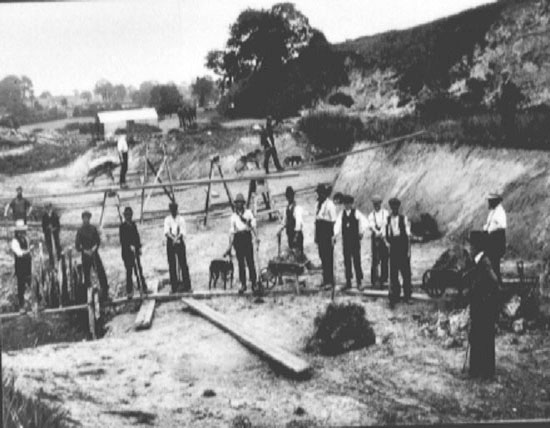 Reputed picture of repair to North Walsham and Dilham Canal |
 |
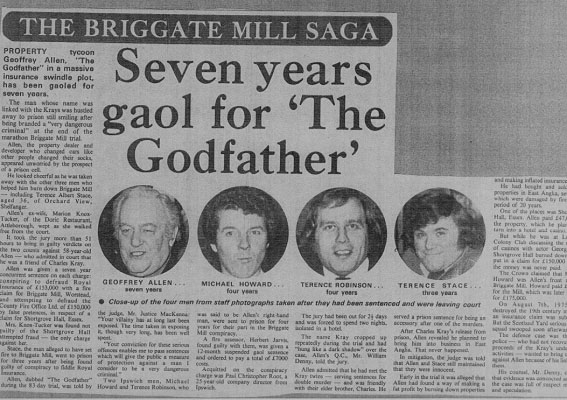 |
Briggate Mill August 7th 1975
| |
| |
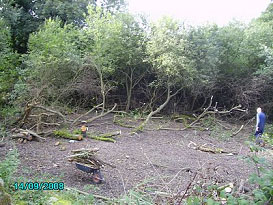 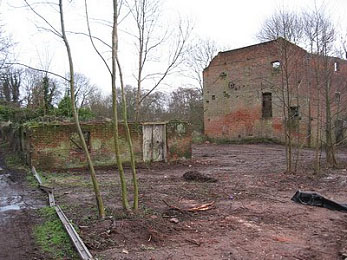 |
Tonnage Bridge
|
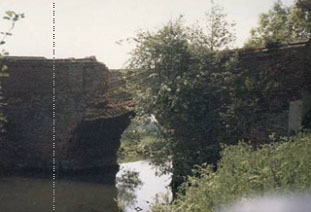 |
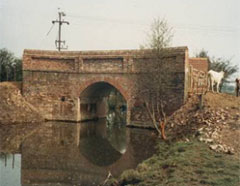 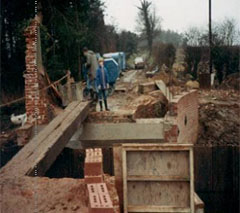 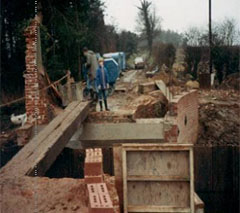
|
| July 1953, Arthur Walker met with Robert Aickman and L.A.Edwards (sec IWA) | |
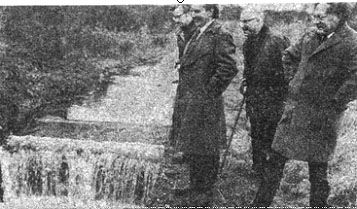  | |
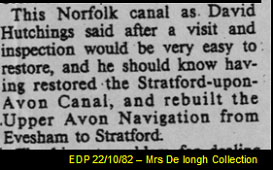 |
In October, L.A.Edwards, then sec of the East Anglian Waterways Association wrote to the EDP |
| Circa1981 Norwich branch of the IWA started to clear the canal from the Smallburgh River up to Tonnage Bridge |
 |
|
1983 NNDC investigated possibility of Trust acquiring the canal, and then restore using MSC and voluntary labour. However they did not proceed as concerned about costs of having to restore what was still a statutory waterway |
| In 1992 the East Anglian Waterways Association initiated
the current restoration proposals. Various meetings with various parties
followed. Civil engineering lock and channel reports were produced in 1996, and
an ecological report in 1998. Late 1996 Norwich IWA became associated with the project. Below Honing lock ,work parties involving the new owner, Mr A. Paterson, & the BA voluntary Sunday group worked on the canal. | |
| Hiccups 1999 NNDC announced support for partial restoration project, but for canoes, sailing boats, angling and walking only, but not for powered craft. 1999 BA Officers recommended limited restoration up to Honing lock, but for restricted numbers of non-powered craft. BA Navigation Committee then queried legality of this policy 2000 IWA Norwich branch disbanded |
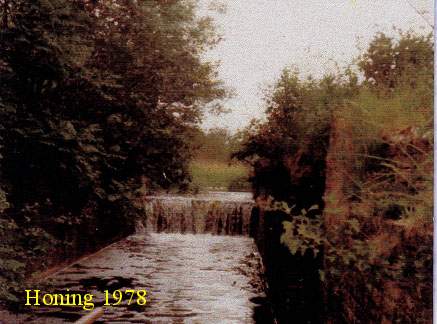 |
| To draw attention to the canal and to attempt to halt rampant
deterioration to the lock structures, the East Anglian Waterways Association
initiated voluntary working parties, first under the leadership of Graham Baker
(2000/1), then Kevin Baker (2002/2006) and since 2006 with David Revill at the
helm
The first was at Briggate in December 2000, followed by Bacton in 2001, Honing in 2002, and Ebridge in 2004 | |
 |
January 25th 2004 - Ipswich Branch of the IWA help with the removal of tree roots at Honing Lock |
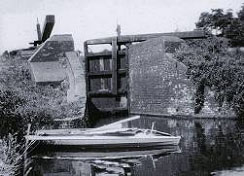 |
Bacton Wood There are two projects here: To restore the lock, with stop planks at first, to allow water to once again run to the mill. |
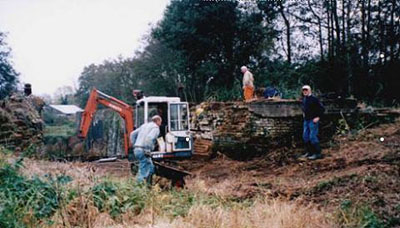 |
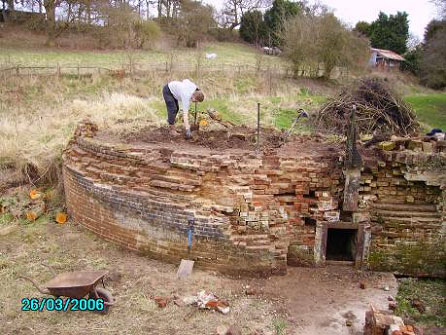 |
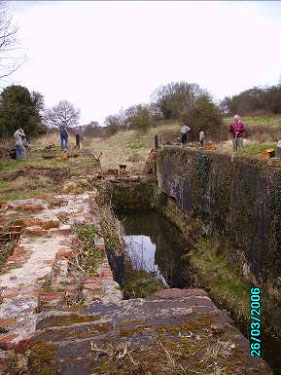
|
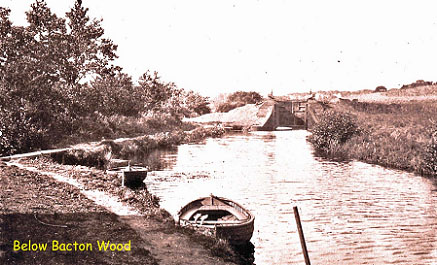 |
|
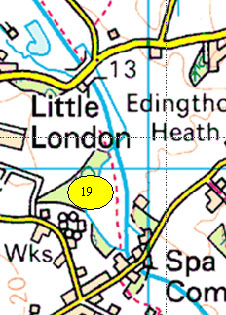 |
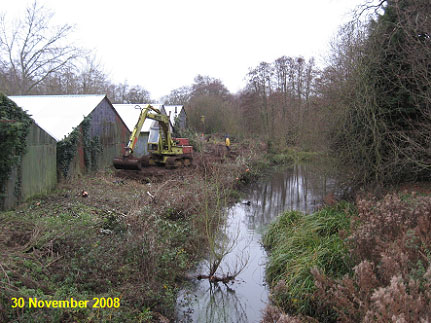
| ||
| Ebridge Lock - clearance of surrounds and route to weir. Problem of collapsed soke culvert by weir | |
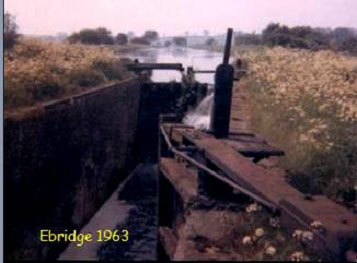 |
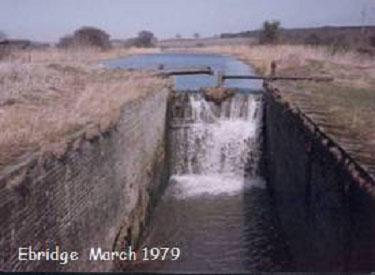 |
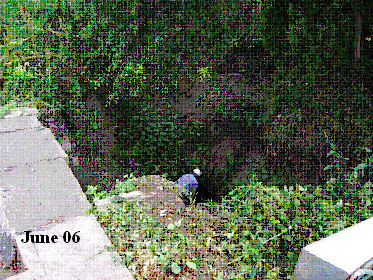
| |
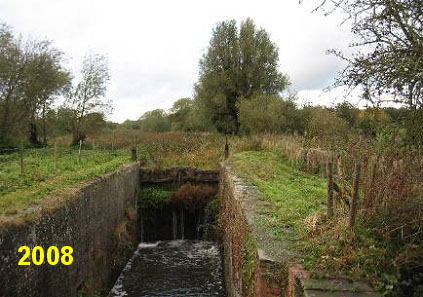
| |
| Ebridge weir has been dug from beneath 2 foot of soke dredgings. Possibly built/refurbished as part of 2nd WW defences. | |
 |
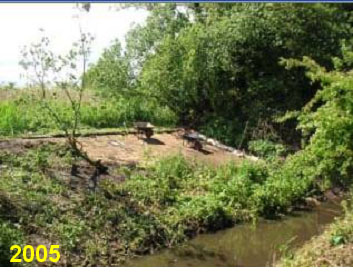 |
 |
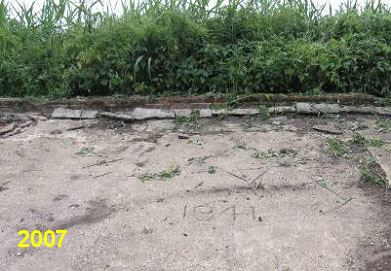
|
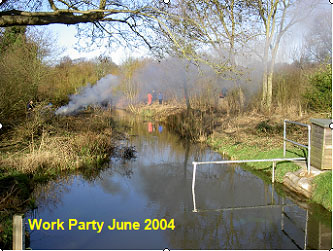
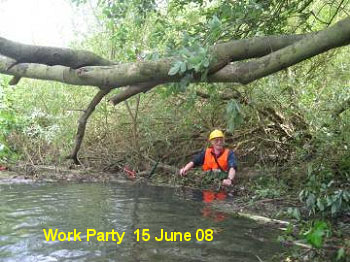
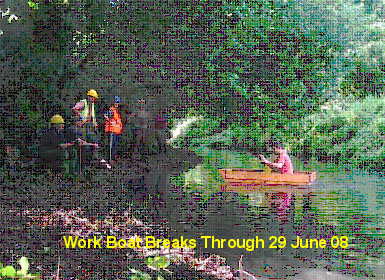
Honing Briggate Pound
| |
| Honing Lock - Work here has concentrated on the removal of the large trees and roots that were destroying the walls, general shrub clearance and making the structure safer for passing gongoozlers. | 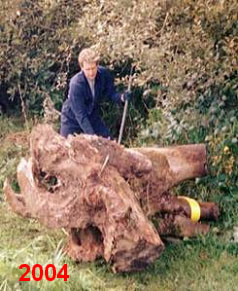 |
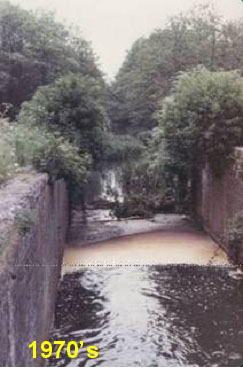 |
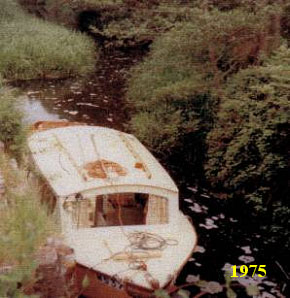
|
 |

|
| The East Anglian Waterways Association is a believer in "Waterways for All" - promoting access to our navigations for the community - whether walkers, nature lovers, anglers, canoeists, boaters or gongoozlers. We work with and support many local societies, trusts and other user bodies in the area - Please visit our LINKS page for more information. |
| ©2013 - East Anglian Waterways Association Limited - Reg. 895405 - Registered Charity No. 251382 |